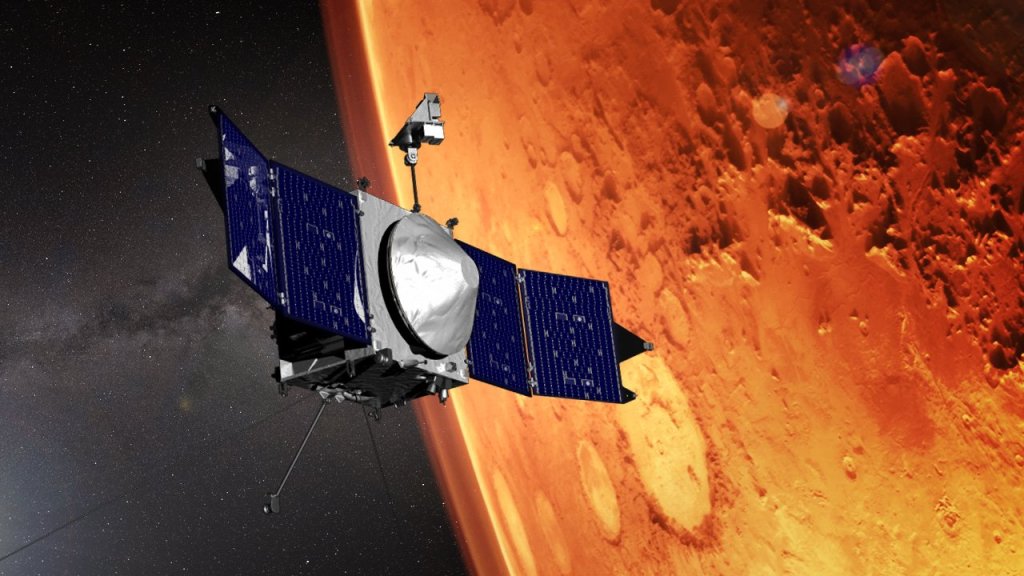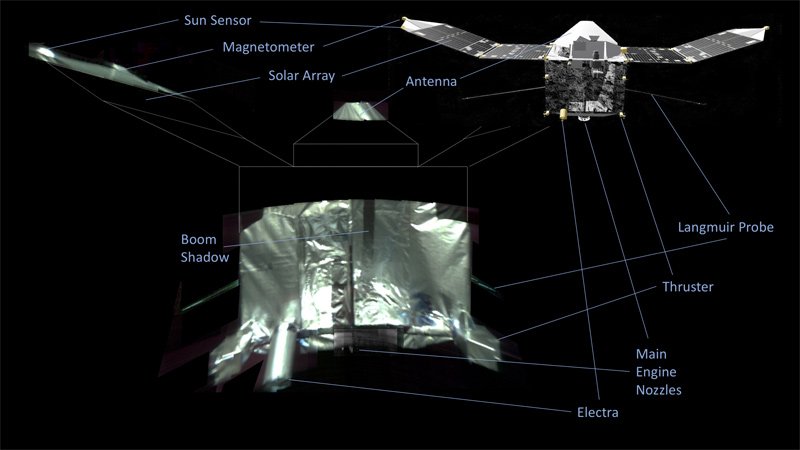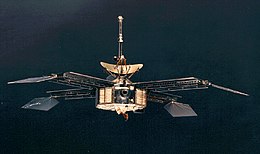Launched from Cape Canaveral on November 18, 2013, MAVEN (Mars Atmosphere and Volatile EvolutioN) is the first mission devoted to the study of the upper Martian atmosphere.

As of September 2022, MAVEN is still operating, despite unexpectedly entering “safe mode” in February, after encountering a problem with the system that tells it which way it’s pointing.
MAVEN was the second of NASA’s Mars Scout Program, a series of low-cost missions that started with the Phoenix lander in 2007. The Scout program later became part of the Discovery Program, a more generalised cost-capped series of launches to assorted destinations, including NEAR Shoemaker (asteroid) Messenger (Mercury) and Deep Impact (comet).

In 2017, the MAVEN mission nearly ended in a very newsworthy way. In late February it became apparent that the craft stood a good chance of colliding with Mars’ moon, Phobos. MAVEN follows an elliptical path around Mars, and so does Phobos, and every so often those paths might cross. The MAVEN team realised that one such crossing was due on March 6th, and that the pair would arrive at the crossing point within 7 seconds of each other. (Read more here.)

Results from MAVEN have helped scientists understand how Mars has been losing its atmosphere, how aurorae behave on the planet, and how sudden changes in radiation might affect future missions involving human crews.

